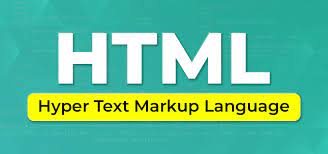
In today’s digital age, websites have become an essential component for businesses, educational institutions, and individuals alike. Behind the stunning designs and interactive elements of these websites lies a powerful yet simple language: HTML. You may have come across the term numerous times, but what is the full form of HTML? This blog will dive deep into the origins, purpose, and role of HTML in shaping the internet as we know it. Additionally, we will explain the nuances of this foundational language and its relevance for web developers and everyday internet users.
What is HTML?
The full form of HTML is HyperText Markup Language. It’s a standardized system used to create and display content on the web. HTML structures the information that users see on a website, making it possible to add text, images, links, and other multimedia elements. Essentially, HTML tells the browser how to organize content so that it’s easy to read and visually appealing.
The term HyperText refers to the method of linking text across web pages, while Markup Language denotes the set of tags and attributes used to structure the content on a page. Together, HTML forms the backbone of web development, enabling websites to function and interact with users.
History and Evolution of HTML
To understand what is the full form of HTML, it’s also important to know its history. HTML was first developed by Tim Berners-Lee in 1991. It was originally created to help researchers and academics share documents through hypertext links. Over time, it evolved and became the standard for creating websites, influencing the growth of the internet as we see it today.
HTML has gone through multiple versions, each improving on the previous one and adding new features. The current version, HTML5, has advanced capabilities for multimedia and interactive elements, further enhancing the web experience for users.
Why HTML is Crucial for Web Development?
Anyone who works in web development must have a solid understanding of HTML. Since its inception, HTML has been the cornerstone of website creation. But why exactly is it so important? Let’s break it down:
Content Structuring: HTML allows developers to structure the content in a meaningful way. For example, the <h1> tag is used for main headings, <p> for paragraphs, and <a> for hyperlinks. These tags make it easier for both browsers and search engines to understand the content.
Search Engine Optimization (SEO): The structure of HTML plays a crucial role in SEO. By using proper tags and attributes, developers can help search engines like Google crawl and index the website more efficiently. This makes it easier for users to find your website when they search for relevant terms, such as what is the full form of HTML.
User Experience: A well-coded HTML page ensures a better user experience. The language is designed to make content accessible and organized, allowing users to navigate websites easily.
Cross-Platform Compatibility: HTML is compatible with almost all web browsers, making it the most versatile language for creating websites. Whether you’re using Google Chrome, Mozilla Firefox, or Safari, HTML ensures that the website looks consistent across different platforms.
Understanding the Structure of HTML
Now that we’ve explored what is the full form of HTML and why it’s important, let’s dive into its structure. An HTML document is made up of several key elements, each with its own function. Below are some of the most commonly used tags:
<!DOCTYPE html>: This declares the type of document. It tells the browser that the page is written in HTML5.
<html>: This tag is the root element of an HTML page. All content goes inside this tag.
<head>: The head section contains meta-information about the page, such as the title, charset, and links to stylesheets.
<body>: The body tag contains the visible content of the webpage, including text, images, and videos.
<h1> to <h6>: These are heading tags, with <h1> being the most important (main heading) and <h6> the least important (sub-sub-sub heading).
<p>: This tag defines a paragraph of text.
<a>: This tag is used to create hyperlinks, allowing users to navigate to other pages or websites.
<img>: This tag allows you to embed images on your webpage.
Each of these tags works together to create a well-structured and visually appealing web page.
The Role of HTML in Modern Web Design
Web design has come a long way from the simple, text-based websites of the early 1990s. Modern websites are filled with interactive elements, multimedia, and dynamic content. HTML, along with CSS (Cascading Style Sheets) and JavaScript, forms the foundation for modern web design.
1. Mobile Responsiveness
HTML has evolved to accommodate mobile users, ensuring websites are mobile-friendly. With the rise of smartphones and tablets, having a responsive website is crucial for success. HTML5 offers several tags and attributes that make mobile optimization easier. For example, the <meta name="viewport"> tag allows the webpage to scale according to the user’s device, ensuring a seamless user experience.
2. Multimedia Integration
In the past, adding multimedia elements like audio and video required external plugins like Flash. However, with the advent of HTML5, multimedia integration has become much more streamlined. Developers can now use the <audio> and <video> tags to embed media directly into the webpage. This has revolutionized the way websites present content, making it more engaging for users.
3. SEO Enhancements
As mentioned earlier, SEO is critical for a website’s success. The proper use of HTML tags plays a significant role in improving a website’s search engine ranking. For instance, the <title> tag helps search engines understand what the webpage is about, while the use of headings (<h1> to <h6>) helps structure content hierarchically. When a user searches what is the full form of HTML, the search engine will prioritize websites that are properly structured with HTML.
HTML vs. Other Markup Languages
While HTML is the most widely used markup language, there are alternatives that developers may use for specific purposes. Below are some comparisons between HTML and other popular markup languages:
1. XHTML (Extensible HyperText Markup Language)
XHTML is similar to HTML, but it follows stricter syntax rules. It’s a combination of HTML and XML (Extensible Markup Language). While HTML is more lenient with its syntax, XHTML requires every tag to be properly closed and nested.
2. Markdown
Markdown is a lightweight markup language that’s popular for creating formatted text using a simple syntax. It’s often used for writing documentation or README files. While HTML is designed for building entire web pages, Markdown is more suitable for writing content that will later be converted to HTML or other formats.
3. XML (Extensible Markup Language)
XML is a markup language used primarily for storing and transporting data. While HTML focuses on displaying content, XML focuses on organizing and structuring data. The two languages serve different purposes but can work together, especially in web development.
How to Get Started with HTML
If you’re interested in learning more about HTML or becoming a web developer, there are plenty of resources available online. Understanding what is the full form of HTML is just the beginning. You’ll need to practice coding and experiment with different elements and tags to become proficient.
One way to get started is by using code editors like Visual Studio Code or Sublime Text. These editors offer features like syntax highlighting and code suggestions, making it easier to write HTML code. Additionally, you can take advantage of free online tutorials and coding platforms like Codecademy and W3Schools to build your skills.
Future of HTML
HTML will continue to play a critical role in the future of web development. As technology advances, we can expect to see new features and updates that make HTML even more powerful. With the rise of technologies like virtual reality (VR) and augmented reality (AR), HTML may evolve to support more interactive and immersive web experiences.
Moreover, as search engines continue to prioritize user experience, the importance of well-structured HTML code will only grow. Developers who understand what is the full form of HTML and how to use it effectively will be in high demand in the coming years.
Conclusion
In summary, the full form of HTML is HyperText Markup Language, a system that structures content for web browsers. It is the foundational language that enables the creation of websites, making it indispensable for web developers. From basic text formatting to advanced multimedia integration, HTML has evolved to meet the needs of modern web design.
As you navigate through the internet or consider a career in web development, understanding what is the full form of HTML is crucial. Whether you’re creating a personal blog or building a professional website for a business, HTML will remain a core component of your web development toolkit.
FAQs
1. What is the full form of HTML?
The full form of HTML is HyperText Markup Language.
2. How does HTML impact SEO?
HTML helps search engines crawl and index a website, improving its chances of appearing in search results.
3. Is HTML the only language used for web development?
No, HTML works alongside CSS and JavaScript to create fully functional and visually appealing websites.
4. Can I build a website with just HTML?
Yes, but it will be basic. For a more dynamic website, you’ll need to use CSS and JavaScript.
5. What is the difference between HTML and XHTML?
XHTML is a stricter version of HTML, following stricter syntax rules.
 Best Mobile App Development Company in Delhi NCR | Oprezo India
Best Mobile App Development Company in Delhi NCR | Oprezo India
 Top Web Development Services in Delhi/NCR | Oprezo India – React JS, Angular JS, eCommerce & More
Top Web Development Services in Delhi/NCR | Oprezo India – React JS, Angular JS, eCommerce & More
 Top Mobile App Development Company in Delhi / NCR | Oprezo India
Top Mobile App Development Company in Delhi / NCR | Oprezo India
 Mobile App Development in Delhi - Android, iOS, Hybrid & Flutter | Oprezo India
Mobile App Development in Delhi - Android, iOS, Hybrid & Flutter | Oprezo India
 Why Oprezo India is the Best Web Development Partner in Delhi NCR?
Why Oprezo India is the Best Web Development Partner in Delhi NCR?